Cesare Aldo: a photo essay from Florence
D V Bishop, author of the Cesare Aldo historical thriller series set in Renaissance Florence (which begins with City of Vengeance), shares photographs of some of the real places featured in the books.

Winner of the Crime Writers' Association Historical Dagger, David Bishop's historical crime series is set in sixteenth-century Florence, and follows the investigations of Cesare Aldo, a former soldier, now officer of the Renaissance city’s most feared criminal court. David recently returned to Italy as part of his research for the fourth instalment, A Divine Fury. Here he shares some of his photographs.
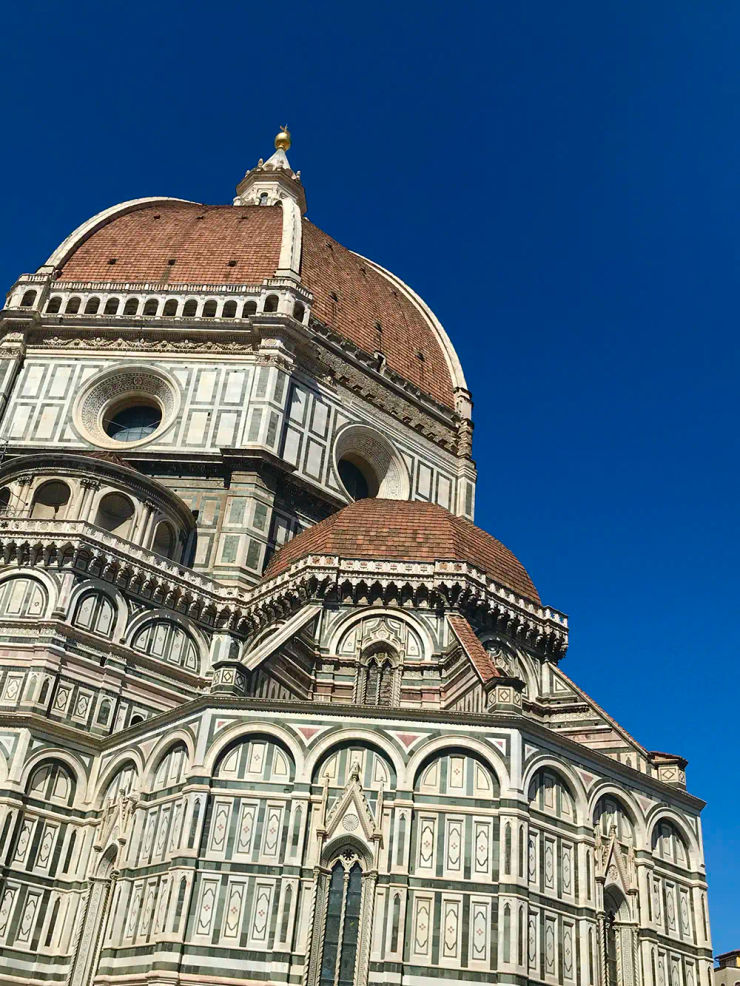
The Duomo is one of Florence’s recognizable landmarks. The Gothic cathedral took more than a century to build, but it is the dome by Filippo Brunelleschi that stands out – a feat of remarkable engineering. For those unafraid of heights and able to climb stairs, a trip up into the dome and then outside it is well worth the effort. The third Aldo novel, Ritual of Fire, mentions the days when 30,000 people – half the population of Florence – crowded into the cathedral to hear sermons by firebrand Dominican monk Girolamo Savonarola. But the city soon turned on him. . .
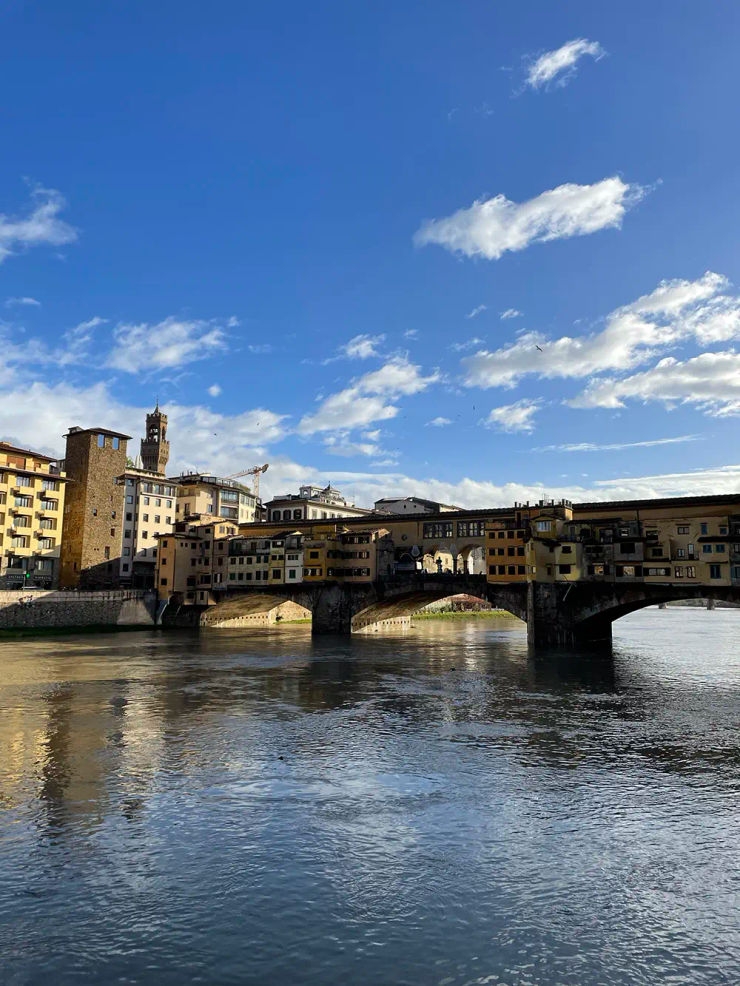
Ponte Vecchio is the oldest surviving bridge in Florence; indeed, the name translates as old bridge. It is thought a bridge of some sort has stood there since Roman times because it is the narrowest point for crossing the river Arno, but the current stone span dates back to the fourteenth century. In the Aldo novels the bridge is lined by shops and stalls selling meat, fish or other goods, so the resulting smells are very strong, especially during summer. These days shops on Ponte Vecchio offer jewellery and souvenirs; more expensive, but far less pungent.

The Medici are synonymous with Renaissance Florence, and their crest of six balls (‘palle’ in Italian) is still found across the city on stone shields and buildings. The family rose to prominence through banking before becoming a political dynasty when Florence was a republic. Over the centuries the Medici provided four popes and two queens of France, but are most noted as patrons of art, architecture, philosophy and science. The first Aldo novel, City of Vengeance, sees young Cosimo de’ Medici chosen to lead Florence, ending decades of turmoil for the family and Florence.
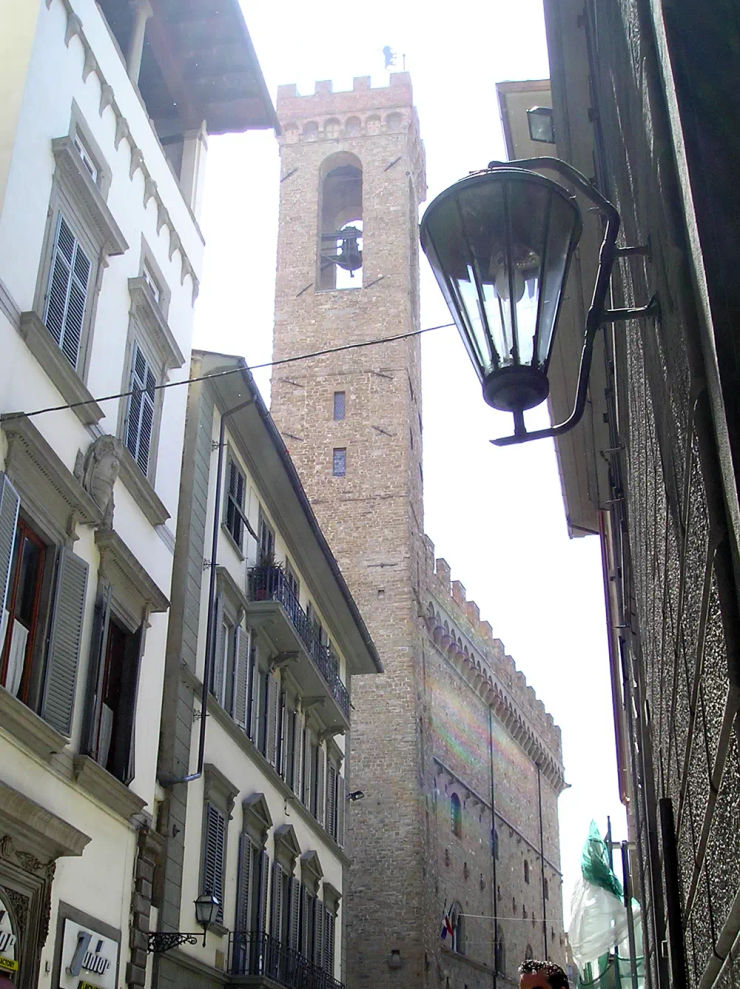
The Bargello is a national art museum in Florence. It houses numerous major artworks including Donatello’s David and Michelangelo’s Bacchus, along with many fine examples of tapestry, ceramics, silver and armour. The Bargello is the oldest public building in Florence, dating back to the mid-thirteenth century. But for much of that history it had far less rarefied purposes as a prison, a barracks and headquarters for the city’s major criminal court, the Otto di Guardia e Balia. That last purpose is how it appears in the Aldo novels.
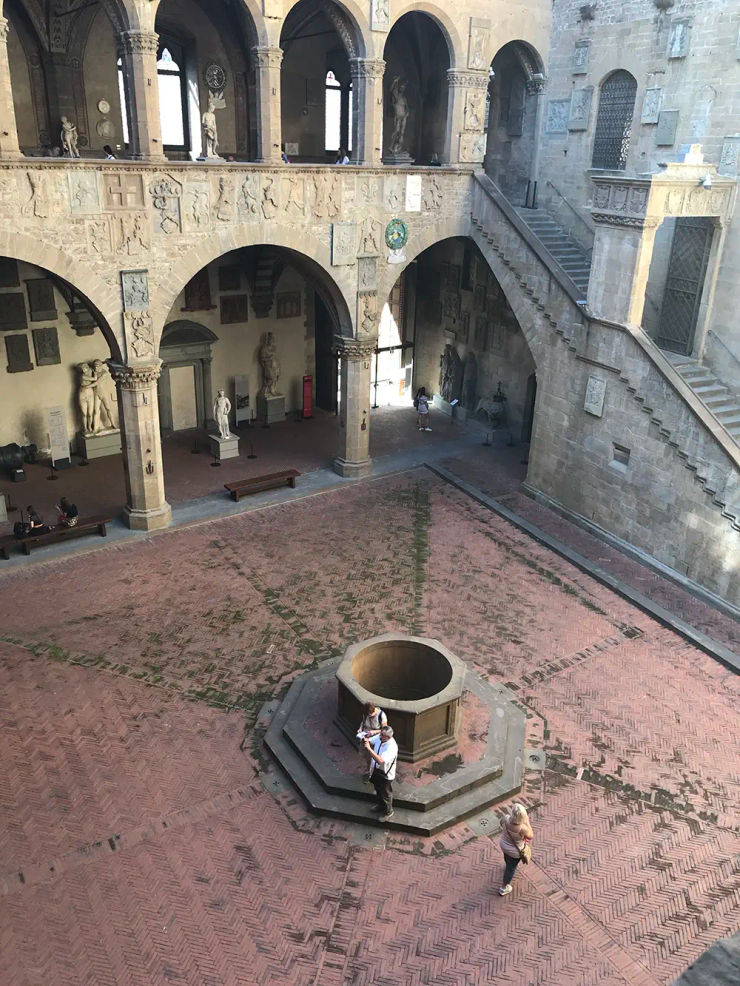
The building that now houses the Bargello is called the Palazzo del Podestà in the first four Aldo novels, all set during the 1530s. The Podestà is headquarters for the most powerful criminal court in Florence, the Otto (‘the Eight’). A large courtyard stands inside the Podestà, an ancient well at its centre. A wide stone staircase rises to the first level when a loggia looks over the courtyard. Off the loggia is the office of the Otto’s officious administrator Massimo Bindi, and the Great Hall where the Otto’s eight magistrates gather to hear testimony, assess guilt and pass sentence.
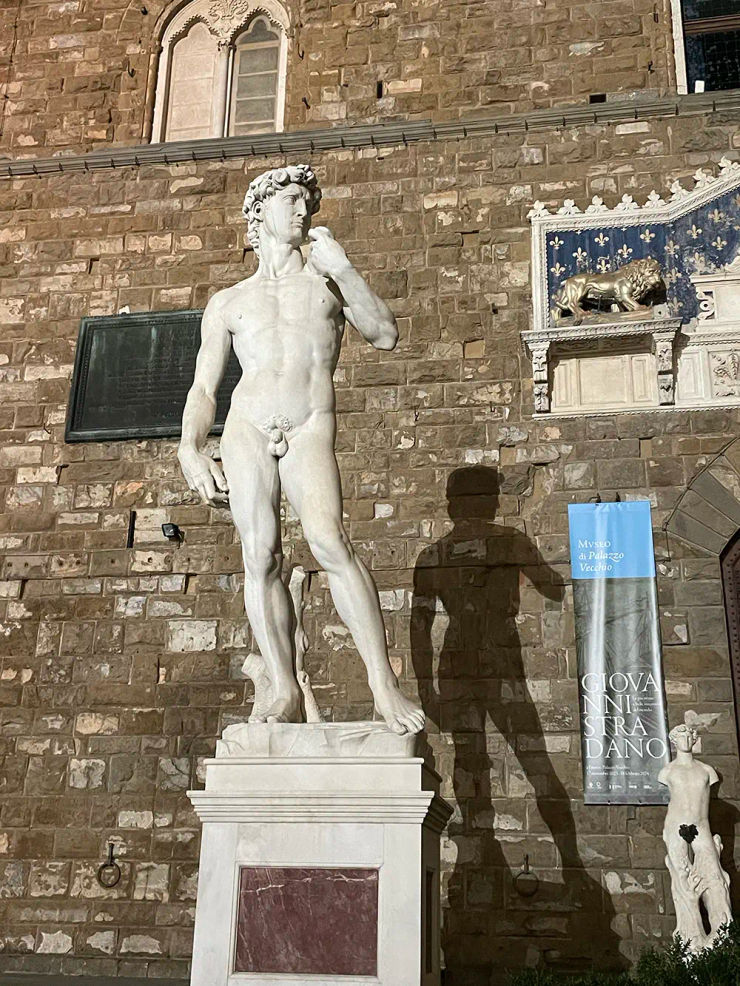
In the opening of A Divine Fury Cesare Aldo discovers a murder victim – the corpse arranged like Christ on the cross – beneath Michelangelo’s statue of David in the Piazza della Signoria. The statue of David that stands there today is a replica, but back in autumn 1539 it was Michelangelo’s original atop the plinth. The seventeen-foot-high statue is a colossal sculpture, carved from a single block of marble. In 1504 it took days to move the statue into place. The naked David was only there a few months before his modesty was hidden behind a garland of copper leaves.
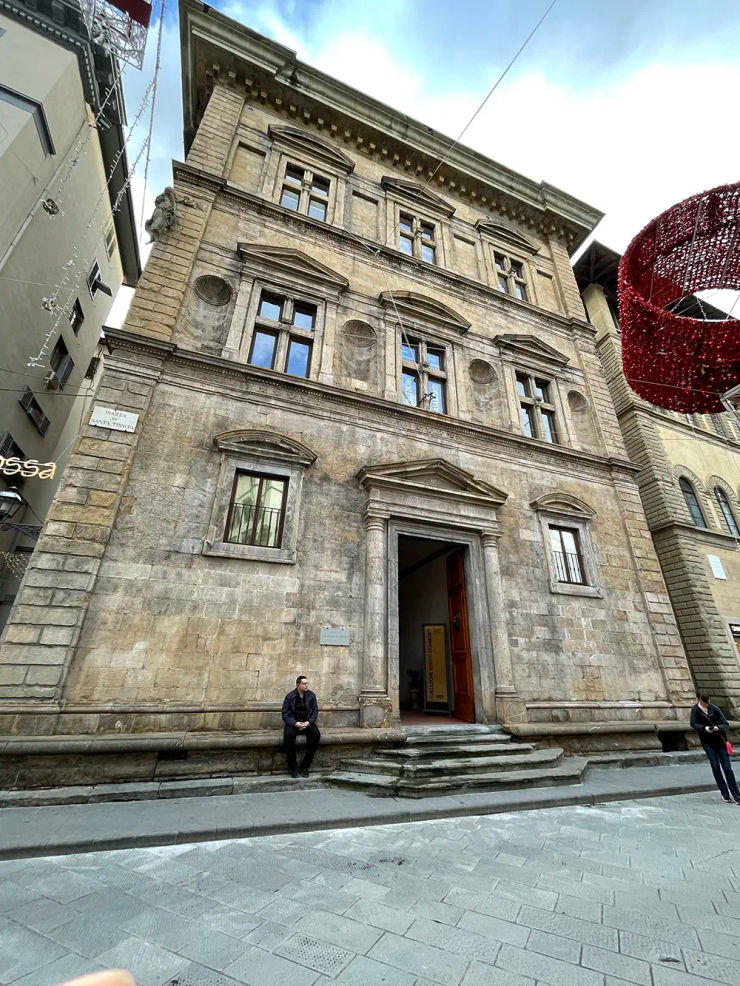
A Divine Fury introduces a new foil for Aldo, Contessa Valentine Coltello. She is Venice’s spymaster in Florence, which makes her an intriguing and dangerous acquaintance for Aldo. She lives in Palazzo Coltello, off the triangular Piazza di Santa Trinita. This is based on a real building, Palazzo Bartolini Salimbeni, which is now seen as a masterpiece of Renaissance architecture, but was considered controversial when built in the 1520s. Architect Baccio d’Agnolo responded by having a Latin phrase carved above the entrance that translates as ‘Criticizing is easier than imitating’. That carving and his creation both endure to this day.
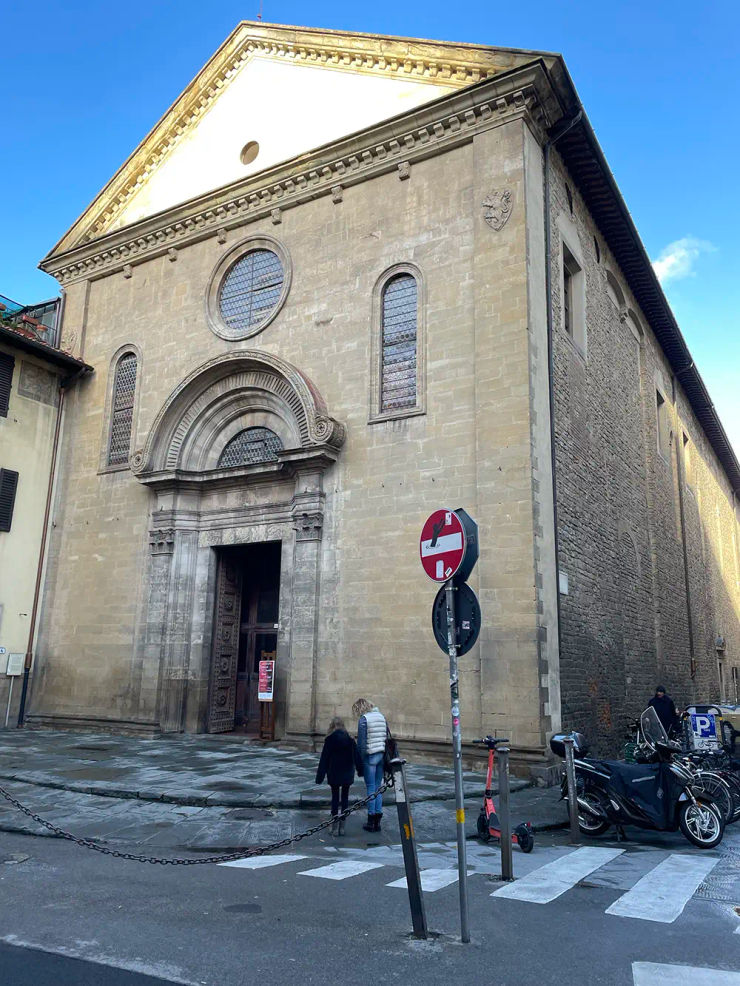
The church of San Felice stands south of the river Arno, not far past Palazzo Pitti. Indeed, a church has been on its site for almost a thousand years, but much of the current structure dates to the fifteenth century. San Felice features in A Divine Fury as the church of exorcist Father Camillo Negri, and his assistant, Father Pagolo Zati. This choice was inspired by a passing comment a walking tour guide made, claiming exorcisms were still performed at San Felice on Wednesdays. Whether or not that is true, it still inspired much of what happens in the novel.
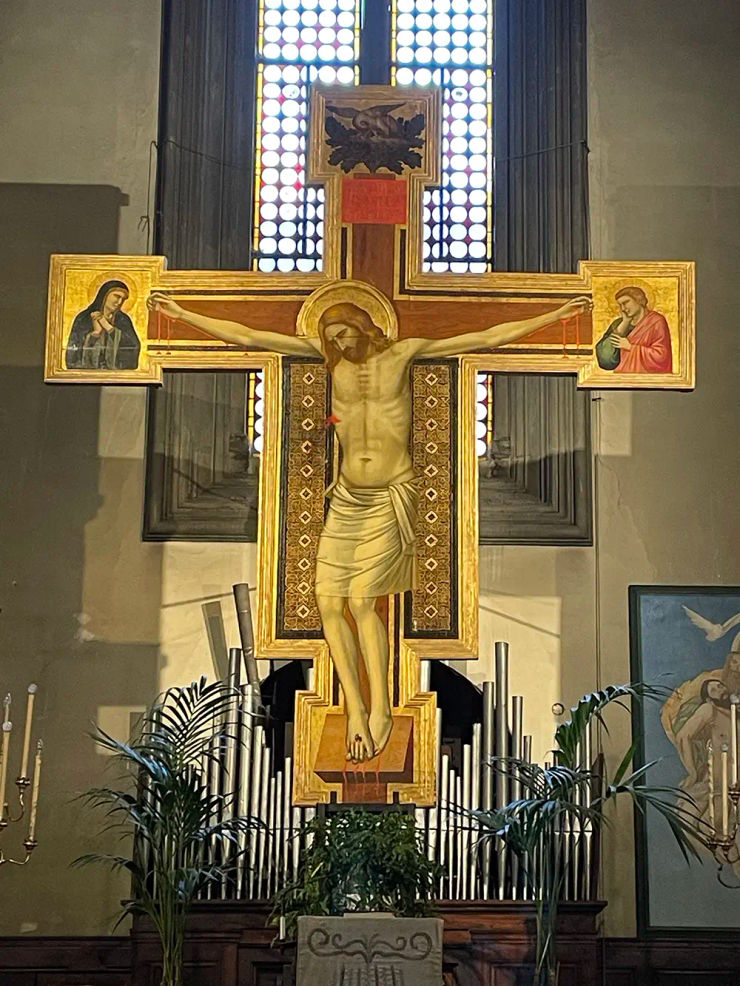
The interior of San Felice has been much renovated and remodelled over the years, so visiting the church requires imagination to picture what it looks like in the autumn of 1539. However, research suggests that one key feature of San Felice is the same: an impressive if forbidding painted cross suspended above the altar. It is believed this is the work of celebrated artist Giotto, or is by one of the painters who studied with him. The cross is certainly striking, and it inspires the killer in A Divine Fury to pose their victims in the same position.
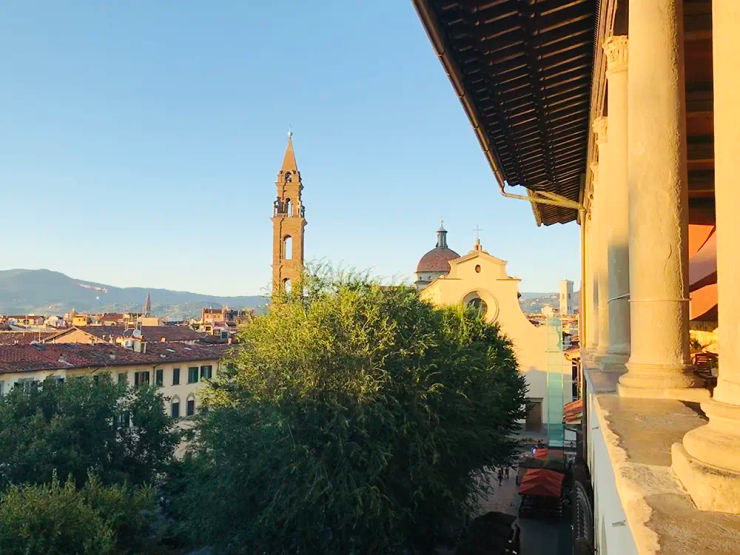
Piazza Santo Spirito is a key location in A Divine Fury as a victim is found in this large square which lies south of the river in Florence’s Oltrarno quarter. At the south-east corner of the piazza is Palazzo Guadagni (called Palazzo Zamora in the novel). This residence was built for a prominent silk merchant and stands a level taller than the surrounding buildings. These days that top floor is a hotel, but visitors can sip cocktails on the loggia which appears in the novel and enjoy ravishing views of the city and beyond as the sun sets.
Cesare Aldo has a new case to solve. . .
A Divine Fury
by D. V. Bishop
Chasing a suspect in the rain, Aldo discovers a horrifying scene beneath Michelangelo’s statue of David. Lifeless eyes gaze from the face of a man whose body has been posed as if crucified. When more bodies appear, Aldo believes an unholy murderer is stalking the citizens of Florence. Watching. Hunting. Waiting for the perfect moment to strike again. A religious serial killer is haunting the city and only Cesare Aldo can stop them.
Catch up with the series
All photos © David Bishop






